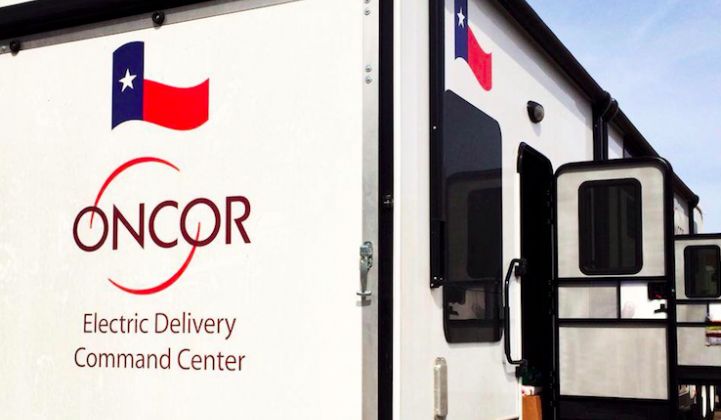Texas utility Oncor wants to spend billions of dollars on batteries to back up its transmission and distribution network -- a major investment in grid-scale energy storage that will require major changes in the country’s most deregulated energy market.
In a first for a Texas transmission and distribution utility, Oncor will seek state regulatory approval for up to $5.2 billion in distribution-grid-connected batteries, with deployment set to start in 2018. According to the Dallas Morning News, Oncor’s plan calls for up to 5 gigawatts of batteries, ranging from refrigerator-sized to containerized units, across its service territory.
2018 is a suitable deadline for a process sure to include pushback from the state’s power generation utilities, which hold privileges in supplying energy and power to the state’s grid under Texas’ competitive energy regime. But it’s also indicative of a bet that battery prices will fall significantly over the next four years, ensuring the investment pay off in terms of fewer power outages, lower grid-upgrade costs, and other benefits that will end up reducing customer utility bills.
Oncor hired the Brattle Group to analyze the impact of $5.2 billion invested in distributed, utility-controlled batteries. The Boston-based consulting group reported that ERCOT could see positive impacts from up to 5 gigawatts of “grid-integrated, distributed electricity storage,” based on the presumption that battery prices will fall to $350 per kilowatt-hour, about half the cost of the cheapest lithium-ion batteries available today (PDF). At those prices, Oncor’s distributed storage fleet could drive average Texas residential power bills down by 34 cents to $179.66 a month, according to the report.
Oncor’s plan represents one of the biggest potential energy storage procurement opportunities in the country -- if it actually comes to pass. As noted in the Dallas Morning News piece, Oncor will almost certainly face formidable opposition from state legislators and energy regulators.
So far, California has led the country in energy storage, with a 1.3-gigawatts-by-2022 mandate, along with regional procurements like the 250 megawatts of storage contracts awarded by Southern California Edison last week. Hawaii could see up to 250 megawatts of storage procured for the island of Oahu, and New York has multiple storage pilots and projects underway, from downtown Manhattan to upstate.
Texas could be a competitive market for energy storage, albeit one with a number of unique characteristics. ERCOT, the state’s grid operator, works outside strict federal jurisdiction, since it doesn’t reach across state lines. It also lacks any market mechanism to secure grid capacity -- that is, paying power-generation or demand-reduction projects today to incentivize the development of new projects in years to come. Indeed, Oncor’s plan could be seen as a way to provide grid capacity for a system that’s predicted to be short on the commodity in the future.
The Brattle Group’s report found that “merchant providers” of energy storage -- private parties that play directly into the state’s energy markets -- won’t be able to meet the state’s needs, because they are unable to monetize a lot of the benefits of storage that don’t show up in the market. “Approximately 30% to 40% of the total system-wide benefits of storage investments are associated with reliability, transmission, and distribution functions that are not reflected in wholesale market prices,” the report noted.
States like California, New York and Hawaii are moving forward with regulatory changes aimed at recognizing these multiple values in ways that can open them up to customers, third-party providers and other emerging grid-edge actors. But transmission and distribution utilities can recognize those benefits directly, although they may be barred from using the same ratepayer-backed storage system to play in various grid services markets.
California has mandated that the state’s big three investor-owned utilities own no more than half of the 1.3 gigawatts of storage they’re required to procure by the end of the decade. It’s unclear how Texas regulators will manage the same issue as it applies to Oncor’s plan, given the lack of state incentives, market access challenges and other key barriers facing non-utility participants in the emerging market.
Texas also parallels California in the challenge it faces to integrate its growing share of renewable energy into the grid. That’s mostly West Texas wind power today, and large-scale storage projects, like Duke Energy’s 32-megawatt Notrees project, are springing up to provide services that support the value of those intermittent resources. Texas is also facing a boom in rooftop and utility-scale solar, and distributed batteries could be a flexible and effective way to manage those distributed, fluctuating resources at the edge of Oncor’s grid.
As for where Oncor might look for distributed battery expertise, the Dallas Morning News mentioned that utility executives had met with Tesla Motors, builder of the Giga factory lithium-ion assembly plant in Nevada, along with several other companies with similar distributed-scale energy storage products on the market.



